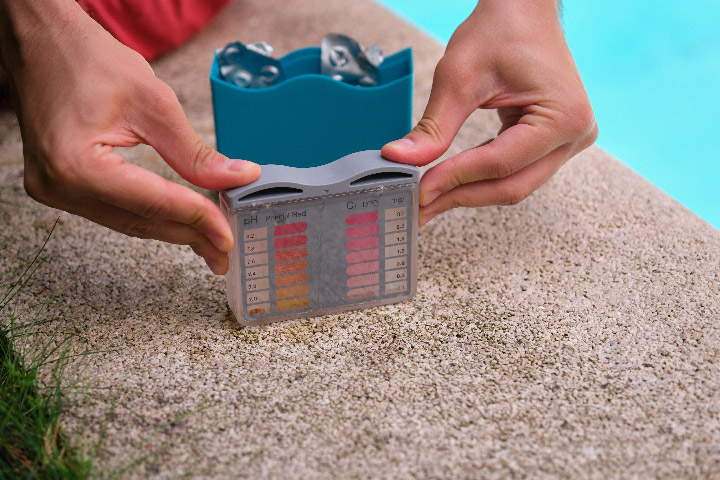
Copper in Swimming Pools: The Good, the Bad, and the Ugly
Understanding the Role of Copper in Swimming Pool Maintenance and How to Manage It
Copper is a naturally occurring metal that can sometimes find its way into your swimming pool water. While copper has some beneficial uses in pool care, such as in certain algaecides, it can also cause problems if present in high concentrations. In this article, we will discuss the role of copper in swimming pool maintenance, potential issues it can cause, and how to manage and prevent high copper levels in your pool.
- The Good: Copper as an Algaecide
Copper is an effective algaecide when used appropriately. It works by damaging the cell walls of algae, making it difficult for them to grow and reproduce. Copper-based algaecides are particularly useful in controlling and preventing the growth of various types of algae, including green, black, and mustard algae.
When using a copper-based algaecide, follow the manufacturer’s instructions for dosage, as too much copper can cause problems. It’s also essential to maintain proper pool chemistry, as imbalanced water can reduce the effectiveness of copper algaecides.
- The Bad: Copper Staining and Discoloration
One of the main issues with copper in swimming pools is the potential for staining and discoloration. High concentrations of copper can cause green, blue, or gray stains on your pool’s surfaces, including the liner, plaster, and tile. Copper can also cause green or blue discoloration of blond hair, particularly when combined with imbalanced pool chemistry.
To prevent copper staining, it’s essential to test your pool water for copper regularly, particularly if you’re using a copper-based algaecide. If copper levels are too high, you can use a metal sequestrant to help prevent staining. It’s also crucial to maintain balanced pool chemistry, as high pH and low alkalinity can make staining more likely.
- The Ugly: Copper Corrosion
Copper can also find its way into your pool water through corrosion of copper components in your pool’s plumbing, heater, or other equipment. Low pH, high chlorine levels, and other imbalances in pool chemistry can cause this corrosion. Over time, copper corrosion can lead to equipment damage and failure.
To prevent copper corrosion, maintain balanced pool chemistry and test your water regularly for copper levels. If you find that your pool equipment is corroding, consult a professional to determine the cause and address any underlying issues.
- Managing Copper in Your Swimming Pool
Regular testing and maintaining proper pool chemistry are crucial to managing copper in your swimming pool. Here are some steps you can take to manage copper levels:
- Test your pool water for copper regularly, particularly if you’re using copper-based algaecides or have copper components in your pool equipment.
- Maintain proper pool chemistry, including pH, alkalinity, and sanitizer levels, to help prevent copper corrosion and staining.
- Use a metal sequestrant if copper levels are too high to help prevent staining and discoloration.
- Consult a pool professional if you’re experiencing ongoing issues with copper in your pool, such as equipment corrosion or stubborn staining.
Conclusion
While copper can play a beneficial role in swimming pool maintenance as an algaecide, it can also cause problems such as staining, discoloration, and equipment corrosion if not managed correctly. By regularly testing your pool water, maintaining proper pool chemistry, and taking appropriate steps to manage copper levels, you can enjoy a clean, clear, and safe swimming environment all season long.




